I have a table like this:
which is generated by following code:
id <- c("1","2","1","2","1","1")
status <- c("open","open","closed","closed","open","closed")
date <- c("11-10-2017 15:10","10-10-2017 12:10","12-10-2017 22:10","13-10-2017 06:30","13-10-2017 09:30","13-10-2017 10:30")
data <- data.frame(id,status,date)
hour <- data.frame(do.call('rbind', strsplit(as.character(data$date),' ',fixed=TRUE)))
hour <- hour[,2]
hour <- as.POSIXlt(hour, format = "%H:%M")
And what I want to achieve is to select the earliest open time and latest closing time for each id. So the final result will look like this:
Currently I use sqldf to solve the problem:
sqldf("select * from (select id, status, date as closeDate, max(hour) as hour from data
where status='closed'
group by id,status) as a
join
(select id, status, date as openDate, min(hour) as hour from data
where status='open'
group by id,status) as b
using(id);")
Question1: Is there a simpler way to do so?
Question2: If I select max(hour) as any other name rather than hour,the result will not be in the format of date and time, but a series of number like 1507864200, 1507807800. How to keep the time format while assigning different names to the columns?

